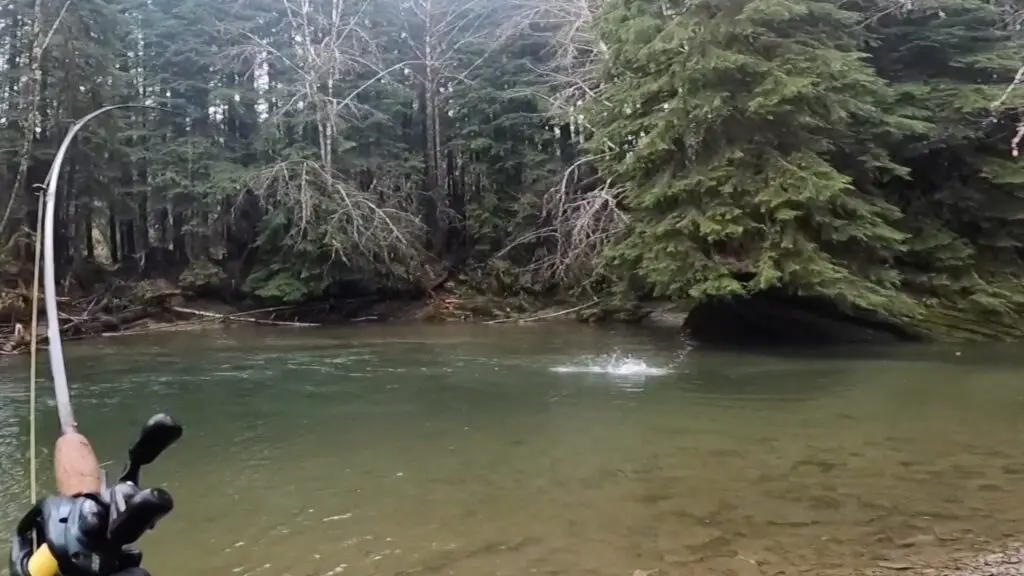
Every winter, thousands of anglers head to rivers and creeks far and wide to chase winter steelhead.
Many, and in fact most steelhead chasers will not be successful in their quest. This is how the old adage “10% of anglers catch 90% of the fish” became a thing and “steelhead are the fish of 1000 casts” is another oft-quoted phrase about these elusive fish.
From talking to many fellow anglers on the banks and online, I get the sense that there are some misconceptions about what makes steelhead angling so very difficult.
The idea that I see many anglers gravitate to, as to why they didn’t hook a steelhead usually involves the fish not biting, or not using the right lure or bait to make the bite happen.
One of the goals of writing this page is to dispel this myth.

It’s more likely that your lure or bait was not presented to a single steelhead all day than that you presented it perfectly and the steelhead just didn’t bite.
That’s why learning how to read water to identify where steelhead are most likely holding or traveling remains the most critical skill in the steelhead angler’s arsenal.
One thing I believe very strongly about steelhead is that they are excellent biters. Often much better than salmon!
Why, if steelhead are such great biters, are they so hard to catch? I’ve got two primary reasons for you:
- There are far fewer steelhead. You may fish all day on some rivers and not be near more than a handful of steelhead the entire time. Or maybe even none at all.
- Anglers often focus on the water which is far less likely to hold steelhead.
I’ve got some tools on the blog here to help you with #1. Escapement report graphs and run timing history can help you “time the run”, combined with looking at water flows.
Being aware of the run timings and river conditions can put you in a position to fish a river with steelhead in it when you make the trip.
This page is devoted to helping us all with #2, learning how to read and select the right steelhead holding water to fish.
Common Characteristics of “most” steelhead water
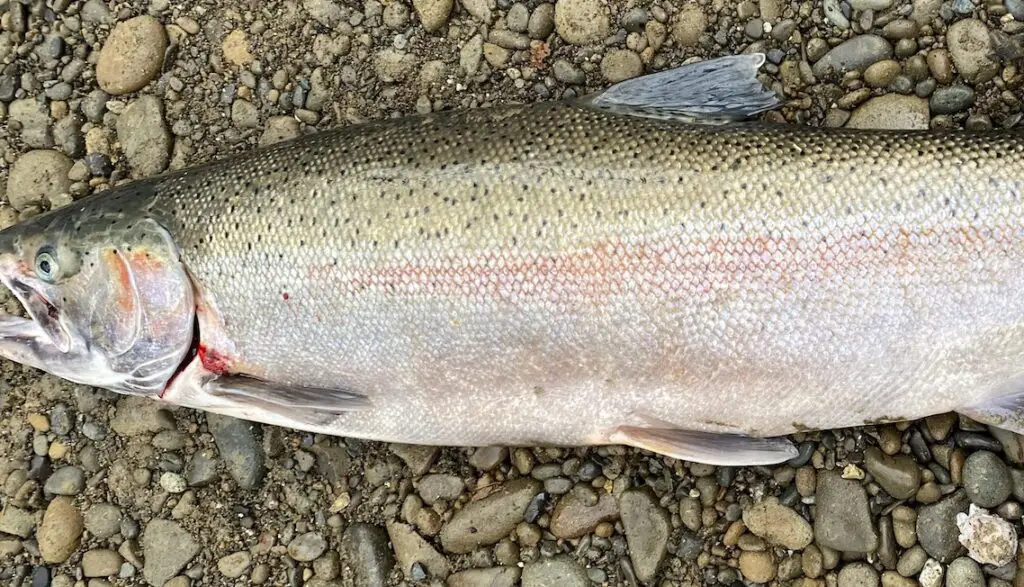
I have to say “most” in quotation marks here because there are very few absolutes with steelhead or salmon for that matter. Y
ou may find steelhead in all kinds of water you wouldn’t think they should be in, even if you’re an experienced angler.
However, there are common characteristics of the water that most steelhead like to travel in.
Steelhead are powerful fish and very strong fighters, swimmers, etc. They can hold in some very heavy flows with not much effort.
However, they don’t prefer this water by default. As potent as they are, they are always trying to conserve energy.
Steelhead can often survive the spawning process, so there’s an advantage to not being completely depleted leading up to the spawning event, which is different than salmon which do NOT survive the process.
This translates to steelhead preferring much softer water than we would think. Here’s a few common characteristics of the water they prefer:
- They will generally prefer depths of 4-6 ft in a small-medium-sized river, adjusted for clarity. Meaning if clarity is reduced, you may find them in 2-3 ft. If clarity is 4 ft, they may prefer 5-7 ft. But all things being equal, and typical 3 ft clarity (steelhead green), you will often find them in that 4-6 ft depth. water.
- The current of the water they prefer will most often be walking speed. As in the speed of a typical person’s walk…now that creates a bit of a speed range of currents, but I would say when in doubt go with slower rather than faster current because of a steelhead’s instinct to conserve energy. Now if they can only get sufficient depth at faster speeds, then that’s what they will prefer.
Noteworthy exceptions
A few exceptions to consider:
- Larger steelhead will also be found in heavier flows. Holding or traveling in faster-flowing currents is simply not taxing for a larger steelhead. So if you are chasing that 20 lb+ fish, you may still find them in the “typical” water, but don’t be afraid to fish the heavier stuff looking for that trophy. Also, don’t be surprised if you end most days without a hookup if you do that.
- Larger rivers offer a different preferred depth. You may find steelhead traveling in 4-15 ft on the Columbia River for example, whereas the 4-6 ft guideline is more for your typical river of flows from 500 to 10,000 cfs.
Types of Steelhead water
I’m going to try to cover the types of steelhead water these common characteristics present themselves as. Did I miss one? Feel free to drop it in the comments below to let me know.
The Tail-out transition
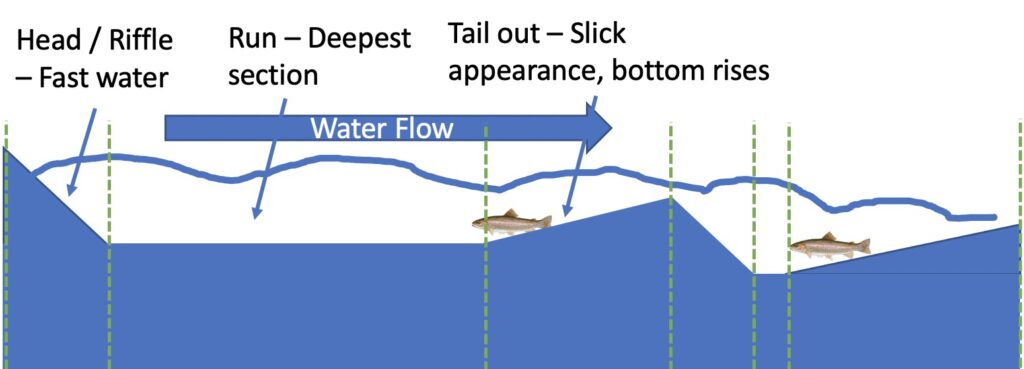
When it comes to the structure and definition of the river/drift they are holding or traveling within, steelhead will prefer the sections with some kind of current break.
The most classic case of this is the tail-out. Tail-outs are sections of the river where the bottom rises just above the next riffle or run.
Steelhead like to hold right at that transition point of drift-> tail-out as the current at the bottom of the river will slow down due to the friction of flowing over the rising bottom.
When it comes to learning how to read water to find steelhead, it is critical that you can identify this transition point between run / drift and the tail-out.
If you were fall salmon fishing you would often avoid these sections because the strong, fresh and chrome salmon are in the middle or head of the run and only the “ready to spawn” fish hangout in this tail-out section, again due to the gentler flows.
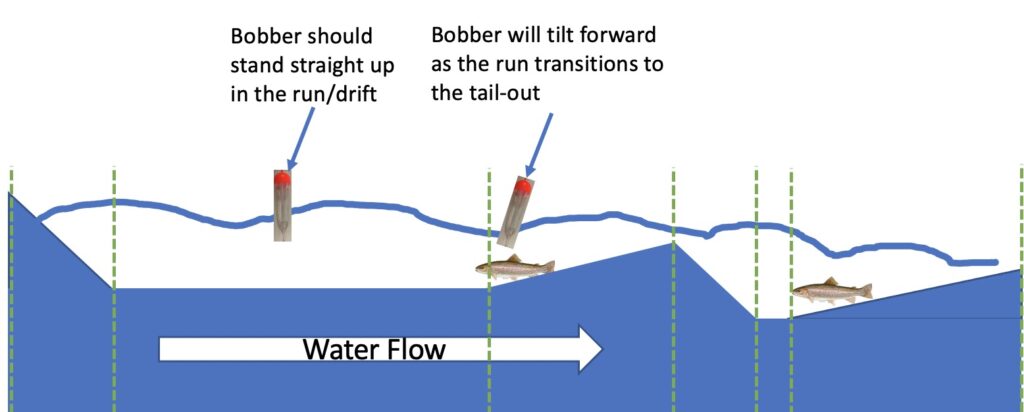
One of the classic tells of where this spot within the river definition is, will be if you are fishing a drift at the right depth of a float fishing presentation and as the float enters the slick area between the drift and the next riffle, you will notice the terminal end of your presentation hits bottom.
I often times will hook a steelhead in this exact spot!
Depending on the width of the river, you may need several casts to completely cover this transition point and tail-out.
Current seams
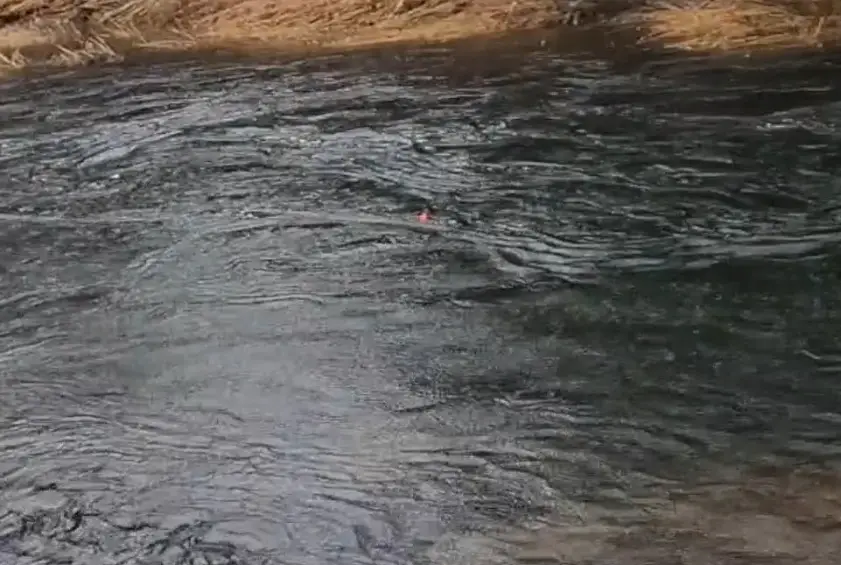
The way river bottoms and flows form will oftentimes result in a narrow stretch of the river having a much stronger and faster flowing current as compared to the rest of the river.
That faster-flowing often slightly deeper water will have a slower current right next to it. If you could draw a line perfectly between the two currents, you’ve found the current seam.
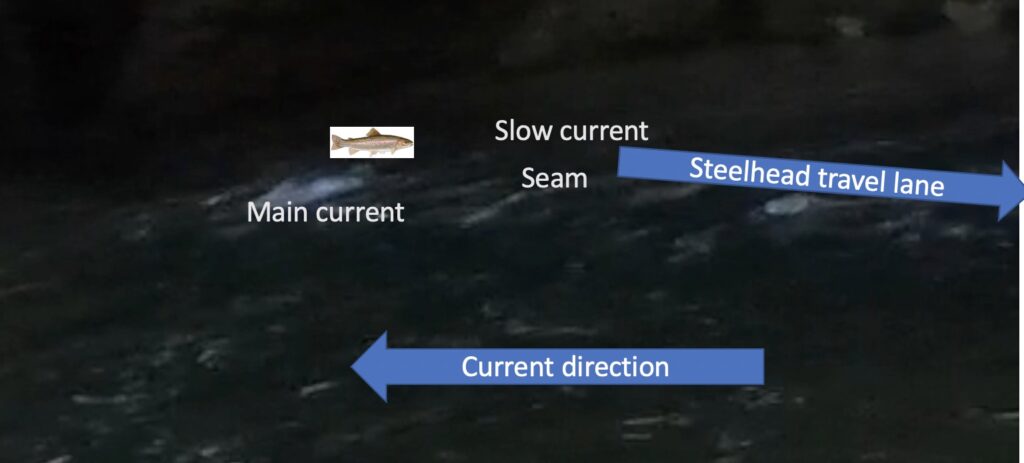
Steelhead can often be found right on this seam. The greater the difference in flow rate between the fast and slow currents, the more likely you will find steelhead here.
What’s nice about fishing a current seam, is that they are fairly narrow, so it kind of takes the guesswork out of whether fish are holding there or not.
One properly presented cast will usually cover the seam for that stretch of water.
Soft water
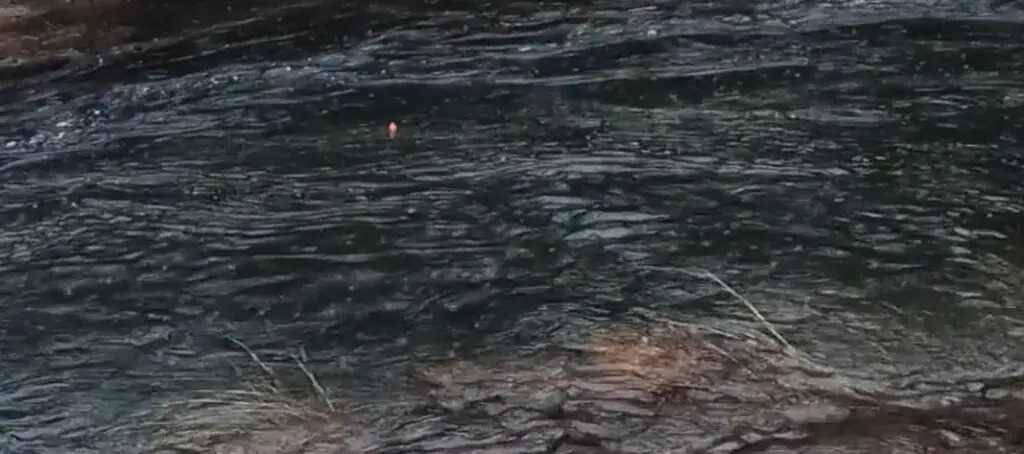
Talking about soft water is a natural transition from talking about current seams, this is because the soft water on the other side of the current seam is often another great place to target steelhead.
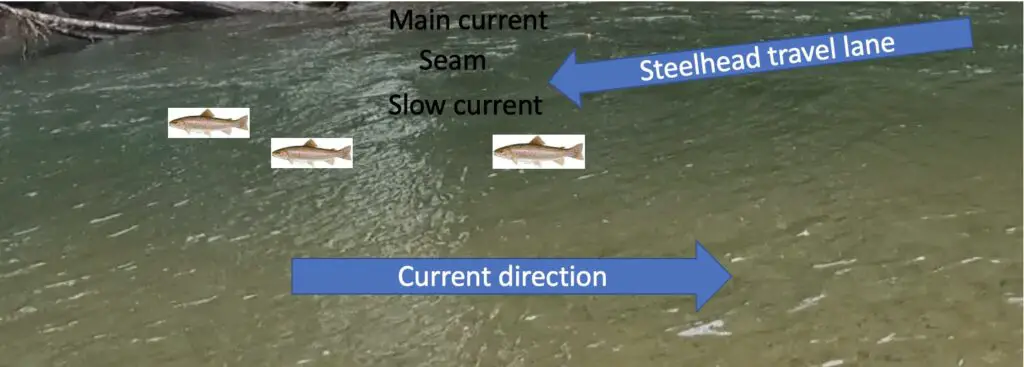
Now, if the water is super soft, froggy and barely moving, you may not want to bother with it.
However, if it has a walking speed or a slightly slower current speed, it may be worth covering completely and properly.
Sometimes an entire drift will be this soft water profile, so it may be worth covering thoroughly before moving on.
Pocket water
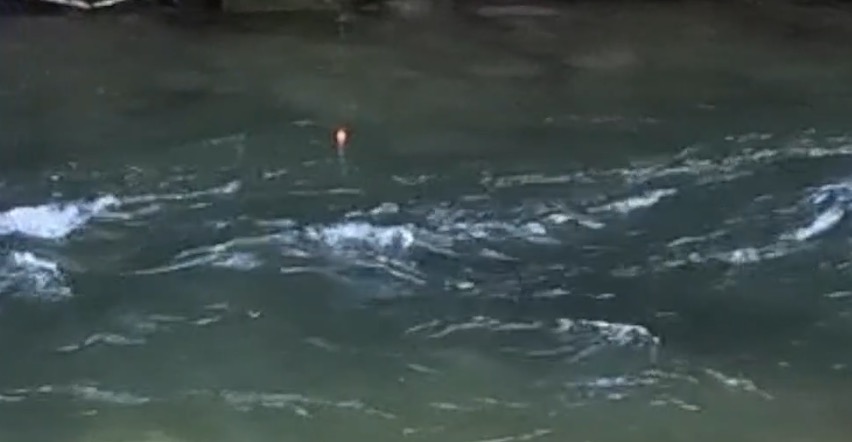
Pocket water is just small stretches of soft water. Pocket water can be created by logs, boulders, points, and a variety of other structures within the river definition.
If the pocket water has the right depth and speed, it’s likely worth targeting as a steelhead may have pulled out of the main current and spend some time here.
Fast riffles
Alright, you won’t typically find steelhead here, but if you cannot see the bottom due to the distortion on the surface combined with depth and especially if water visibility is really high, you may find steelhead hanging out in this type of water for safety.
And in particular, you may find larger steelhead here. Typically, this water is too fast to float fish effectively, so going with a technique such as heavier spoons is generally preferred.
Wrapping up and further resources
Hopefully, the above pictures, diagrams, and information help you read and identify the best steelhead holding water the next time you are on the river.
If you’re looking for ideas of where to fish for steelhead in the state of Washington or general tips about what to use, tackle and how to catch winter steelhead take a look at the links I included in this text.